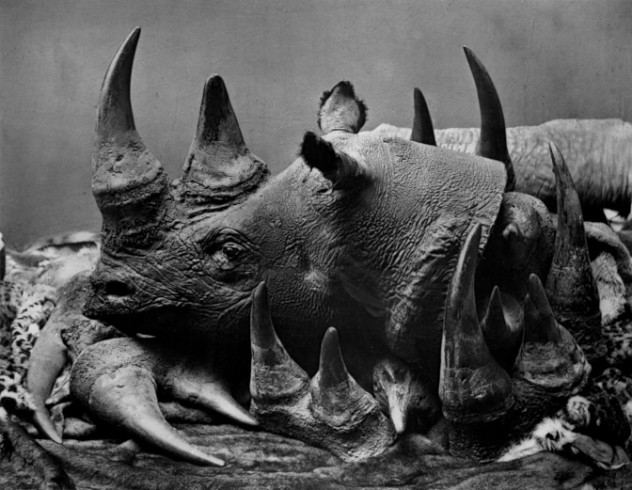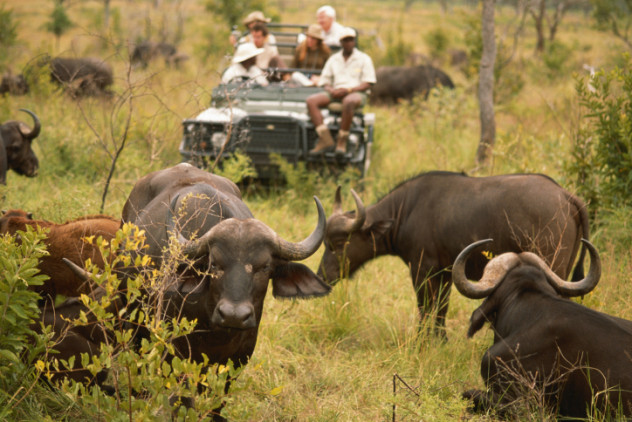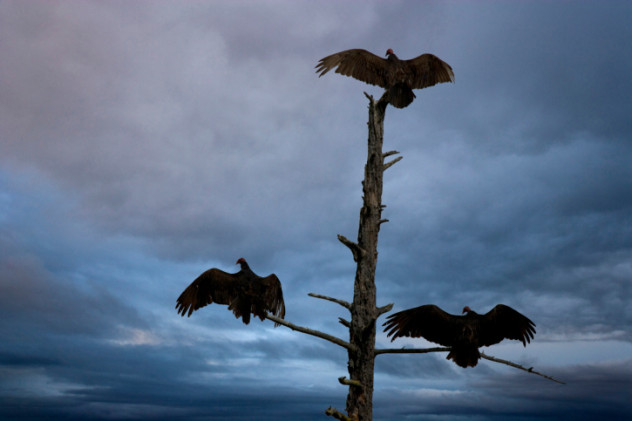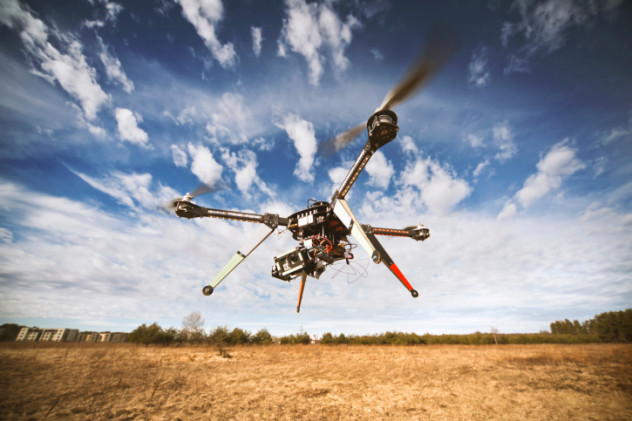Unfortunately, things are looking pretty grim for our pachyderm partners. Approximately 35,000 elephants and 1,000 rhinos are killed by poachers each year. The demand for ivory and rhino horns has already caused the western black rhino to go extinct, and some conservationists believe both rhinos and elephants might vanish completely in just two decades. Sadly, poachers are busy at work around the world. In 2010, hunters wiped out the last remaining Javan rhinos in Vietnam, and Asian elephants are often killed for their tusks and skin. But while countries like Thailand struggle with the problem of poaching, most illegal ivory and horns come from nations like Kenya and Zimbabwe. So, for this list, we’re focusing solely on poaching in Africa.
10Who’s Causing All The Trouble?
With elephants and rhinos on the verge of extinction, it’s only natural to ask, “Who’s responsible?” Well, the easiest answer is to point a finger at the poachers. After all, these are the guys actually pulling the triggers. But while there are certainly villains out there who use their poaching profits to support terrorism, most poachers are poverty-stricken men who are just trying to feed their families. To find the real bad guys here, you have to look toward the East. In countries like China and Vietnam, the demand for black market animal goods is astronomically high, and people are willing to pay outrageous amounts of money for elephant tusks and rhino horns. Just a pound of ivory can sell for over $1,000, and Vietnamese citizens are willing to fork over up to $100,000 for just a kilogram (2.2 lb) of ground-up rhino horn. So what’s with the exorbitant prices? Well, in Vietnam, rhino horn is used as a magical cure-all. Supposedly, ingesting this stuff can do just about anything, from curing hangovers to getting rid of cancer. It’s also believed powdered horn can get you high, which is absolutely ridiculous as it’s made up mainly of keratin, the same stuff that comprises our fingernails. But contrary to popular belief, Asians don’t use rhino horn as an aphrodisiac. Well, at least they didn’t until Westerners created the rumor, and the myth of rhino horn’s sexual powers made its way back to Vietnam. As for ivory, it’s used to create antiques and works of art. In China, these ornate pieces are status symbols and are often given as gifts from one businessperson to another. But where do these trinkets come from? Well, you can visit an illegal online store or drop by one of the 150 shops that are licensed to sell ivory. The catch is that every item—from figurines to entire tusks—must come with a photo ID displaying the object in question. Why? Well, it’s to prove the ivory came from a stockpile legally purchased by the Chinese government. Of course, there are ways around the system. Oftentimes, the IDs are recycled, used again and again for different items so shops can sell trinkets made from illegal ivory. And there is quite a lot of illegal ivory in China. In 2013 alone, Hong Kong officials confiscated 6.3 metric tons (7 tons) of the stuff, and more is coming into the country ever year. If conservationists hope to save rhinos and elephants from extinction, first they must change the way people in Southeast Asia think about these African animals. Barring that, there’s no real hope.
9America Isn’t Blameless Either
In 1989, the United Nations Convention on International Trade in Endangered Species made history by voting to ban the international ivory trade. Of course, this didn’t affect the ivory market inside individual countries. That’s why in 2013, President Barack Obama issued an executive order forbidding the sale of ivory inside the US. And just to drive the point home, the government crushed 5.4 metric tons (6 tons) of the stuff. However, while the US is one of the countries leading the charge in the war on poaching, there’s definitely quite a bit of blood on Uncle Sam’s hands. Believe it or not, America is actually the second biggest market for ivory in the world, and up until recently, states like New York, California, and Hawaii were hotspots for white gold. And if you jump in a time machine and travel back just a few years, you’ll learn there was a time when the US was the epicenter for the world’s ivory trade. Between 1840 and 1940, Americans were absolutely in love with ivory. It was used in pretty much every product imaginable, from buttons to billiard balls to pearly white combs. Of course, ivory was mainly used to produce piano keys. Pianos were a symbol of refinement in the 1880s, and pianists enjoyed the feel of ivory on their fingers. This was all great news for the town of Deep River, Connecticut. For 100 years, this New England town was home to Piano Works, a factory started by an inventor named Phineas Pratt. He created a machine that was just perfect for cutting ivory, and thanks to his invention, Deep River became the ivory capital of the world. If you were to visit Deep River back in the day, not only would you find a huge factory turning ivory into buttonhooks and toothpicks, you’d find huge greenhouses full of elephant tusks. Known as “bleaching houses,” these strange structures were used to expose ivory to the sunlight. Why? Well, musicians liked their piano keys bright white, and in order to get that perfect color, the ivory had to be left out in the sun for extended periods of time. Sadly, elephants weren’t the only victims of Deep River’s ivory enterprise. All these tusks were supplied by Arab traders who used African slaves to lug the ivory across central Africa. The men were linked together by a heavy log set around their head, and their journeys back and forth were so dangerous that three out of four slaves died during the trip. While ivory piano keys eventually fell out of favor in the 1950s, largely thanks to the rise of plastic, the US ivory industry had already claimed thousands of lives, both elephant and human.
8Safari Photos Are A Killer
Plan on taking a vacation to Africa? Well, you might want to keep your iPhone in your pocket. While modern technology has turned amateur photography into an everyday occurrence, it’s also given poachers a handy new way of tracking down potential prey. The secret is geotagging, a function that includes geographic info in your smartphone pics. If a tourist snaps a photo of a rhino, forgets to turn off the geotag feature, and posts that picture to Facebook, poachers can easily extract geographical metadata that’ll give them the longitude and latitude of their quarry. It’s the same way terrorists destroyed four Apache helicopters, and officials caught programmer and suspected murderer John McAfee. Rhinos aren’t usually in much of a hurry, and they hang around the same spot for several days. So even if poachers find an older photo, it still might provide useful information. Even worse, hunters often disguise themselves as tourists, so they can take a quick pic without arousing any suspicion. And when the sun goes down, the rest of their crew shows up and finishes the job. Even if the geotag feature is off, vacationers need to be cautious with their cameras. If there’s a watering hole or a mountain in the background, poachers can probably recognize the landmark and use your Instagram account to their advantage. Desperate, some safari tours have banned guests from using their phones in certain places altogether. It just goes to show that technology is neither good nor bad—it all depends on how it’s used.
7Elephants Are Losing Their Tusks
Despite celebrities like Leonardo DiCaprio and companies like Google donating millions of dollars to save elephants, these beautiful creatures are still dying at a staggering rate. However, it seems these pachyderms might have one last trick up their trunks. Instead of growing giant ivories, more and more elephants are losing their tusks. According to a study published in the African Journal of Ecology, 38.2 percent of female elephants in South Luangwa National Park, Zambia were born without their trademark teeth. Compare that to other herds, and you’ll find that’s a pretty low number. In one population, 98 percent of the females had lost their tusks, and this isn’t just an African trend. Over in Asia, the number of males without their tusks has risen from 2–5 percent up to 5–10 percent. It looks like as poachers take out the well-endowed elephants, the ones without tusks are passing on their genes. If this keeps up, we might one day live in a world where elephant tusks just don’t exist. Of course, that might pose problems for the animals as they need their tusks for fighting and foraging, but if natural selection decides to do away with their teeth, chances are good they’ll be able to adapt. And while it’s sad to think of these mighty creatures without their iconic ivories, it’s a lot better than the idea of having no elephants on Earth at all.
6Killing Vultures
Elephants and rhinos aren’t the only victims of Africa’s poaching problems. Believe it or not, buzzards are in big trouble, too. As the world’s ugliest scavenger, vultures aren’t usually admired or appreciated. But these birds are incredibly efficient janitors, keeping our planet nice and clean—and that’s actually the problem. A dead elephant is a royal banquet for a bunch of hungry buzzards, and when they get a whiff of decomposing pachyderm, vultures will swarm in by the hundreds. And that’s bad news for poachers. As you might expect, these guys want to keep their kills a secret, and they don’t want park rangers finding any evidence of their crime. Unfortunately, vultures are like police bloodhounds. They get a scent of stinky meat and lead officials straight to the murder scene. Desperate to cover their tracks, poachers have started dousing elephant corpses with chemicals, poisoning any vulture that shows up for a meal. In 2013, poachers in Namibia killed a staggering 600 birds—and that was just for one elephant. Similar events went down in 2012, and left hundreds of vultures to rot in the sun. This is really bad news for vultures. Seven of the 11 species that live in Africa are already endangered or vulnerable. Making matters worse, mother buzzards only lay one egg every one or two years. And when you factor in vulture poachers—yes, there are actual vulture poachers—who cut off their heads for traditional African cures, you can see that these poor birds are in big trouble.
5Elephant And Rhino Security Guards
Pit a poacher against an elephant, and chances are pretty much 100 percent that the poacher is going to win. Sure, a 4.3 metric ton (5 ton) elephant could squish a grown man like a bug, but chances are good the hunter is carrying a machine gun. At the very least, he’s probably sporting a quiver full of poison-tipped arrows. In other words, you should never bring a tusk to a gunfight. Fortunately, poachers aren’t the only folks packing firepower out on the savanna. Take a trip to the Nakuprat-Gotu Conservancy in Kenya or Odzala National Park in the Republic of Congo, and you’ll find trucks full of camo-clad men packing fully automatic machine guns. These are elephant bodyguards, paid to protect these animals from illegal hunters, and if need be, they will use deadly force. The really interesting thing about elephant bodyguards is that almost all of them are ex-poachers who’ve given up their criminal ways. In exchange for turning in their illegal weapons and giving important information on other poachers, they’re given full-time jobs and a legitimate source of income. But elephants aren’t the only animals that receive protection. The white rhinoceros living in the Ol Pejeta Conservancy in Kenya are surrounded by armed men 24 hours a day, seven days a week.
4Drones And Chili Powder
The word “drone” automatically conjures up images of unmanned objects dropping bombs on enemy insurgents—or unarmed civilians, depending on your level of conspiracy theory paranoia. But drones aren’t just weapons. Conservationists hope these machines could become a valuable tool in the fight to save endangered animals. The obvious benefit of using a drone is having a 24/7 eye in the sky. With constant surveillance, especially in areas too dangerous for airplanes, park rangers can keep a close watch on rhino and elephant populations. They can also scan the savanna for any suspicious activity and will know exactly where to go if any trouble arises. But there are a couple of stranger uses for drones as well. According to Marc Gross, the head of the Mara Elephant Project, elephants actually dislike the sound of drones. That’s probably because elephants believe the humming of a drone is actually a swarm of bees, and as we recently learned, elephants are terrified of the little bugs. After all, getting stung on the trunk or the ear is probably an unpleasant experience. So how is this a benefit? Well, if rangers know there are poachers in the area, they could possibly use drones to frighten the elephants away. Another use for drones involves a rather spicy fruit, the chili pepper. Bite into one of these bad boys, and you’ll feel like you just kissed the devil himself. That powerful punch is thanks to capsaicin, the ingredient that sets your mouth on fire. Elephants aren’t very fond of capsaicin, and unlike humans, they know better than to touch it. So what does this have to do with drones? Well, Marc Gross hopes to modify his machines into spraying this stuff. That way, if an elephant is headed toward a group of hunters, the capsaicin will drive the elephant in the other direction. Unfortunately, the drone business has hit a few snags over in Africa. Even though Google donated $5 million to the World Wildlife Fund for drone research, several countries like Kenya and South Africa just recently banned the private use of drones. That’s a real shame as research from the University of Maryland has indicated that drones would probably be extremely effective in the war on poachers. Hopefully, these nations will reverse their decisions and start investing in 21st-century technology. After all, that’s what the poachers are doing.
3The Irish Connection
The Irish Travelers are one of the most interesting groups of people on the planet. While no one is sure where they came from, historians do know that once upon a time, they lived in horse-drawn wagons, traveling from town to town where they’d work as tinsmiths. Today, many Travelers keep up this nomadic existence. Extremely secretive, they live in Traveler trailer parks, marry within their own communities, and speak their own unique language called Shelta. Thanks to their eccentricities, the Irish Travelers face a lot of prejudice. Many folks view the Travelers as crooks or thieves, and unfortunately, there is a criminal element in the Irish Traveler community. Some are expert burglars while others specialize in asphalting roads—and taking off with the money after doing a truly awful job. But what do the Irish Travelers have to do with African poaching? Well, in 2010, officials realized they were up against a very unique gang of thieves, an Irish syndicate with international reach. Their specialty? Breaking into museums and stealing rhino horns. Known as the Rathkeale Rovers, this particular branch of the Irish Travelers was run by Richard “Kerry” O’Brien and Michael “Levan” Slattery. While some members of the Traveler community live in poverty, these two guys were rolling in the dough. O’Brien made millions from dealing in Chinese furniture while Slattery was a big-time antiques expert. Thanks to their millions, the Rovers bought up to 80 percent of the town of Rathkeale, but perhaps more impressively, they kept an international coalition of law officers on their toes for years. The Rovers weren’t exactly Ocean’s Eleven, but they got the job done. In 2013, three men broke into the National Museum of Ireland (commonly known as the Dead Zoo), tied up the security guard, and threw four taxidermy heads into the back of a van. In Paris, a group of Rathkealers launched tear gas into the Museum of Hunting and Nature before making off with a single horn. They broke into castles, museums, and antique shops all across Europe. They showed up everywhere from France to Italy to Scandinavia. Of course, not all of their operations were so flashy. Once, they hired a homeless guy in Austin, Texas to walk into a shop and buy an $18,000 rhino head. Surprisingly, the Rathkeale Rovers were extremely hard to catch. That’s partly because they didn’t send their own people out on jobs. They generally used outside criminals or employees who worked in their asphalting department. Secondly, it was very hard for Europol agents to figure out who was who. Members of the Irish Travelers often give their kids identical names, so it was difficult to figure out who was where and when. But eventually, officials closed in on the Rovers, arresting their Asian-based middleman before finally working up to Slattery and O’Brien themselves. However, it’s not like the Rathkeale Rovers are out of the picture. They’re still big into the smash-and-grab scene, only today they’re more focused on ancient Chinese artwork.
2The Dehorning Controversy
With rhinos on the brink of extinction, some conservationists have turned to rather controversial methods for saving the species from annihilation. One of the most contentious practices is known as dehorning, and it’s exactly what it sounds like. After sedating the animal, a conservationist will use a pen to mark a line across the horn, several centimeters up from the base. Then out comes the chainsaw and off goes the horn. Once it’s removed, the stub is trimmed up and smothered with tar to prevent cracking. Don’t worry—it’s a painless procedure. A rhino’s horn is made out of keratin, calcium, and melanin, and isn’t attached to the skull. The process is similar to clipping your nails, but it’s stirred up quite a bit of debate in the zoological community. One of the main concerns is what happens to the rhino after it loses its horn. Some worry female rhinos won’t be able to defend their calves, and males won’t be able to fend off challengers. Fortunately, the research seems to indicate that dehorning doesn’t really affect a rhino’s behavior, but unfortunately, there’s another—and much bigger—problem. Dehorning doesn’t seem to bother most poachers. Sure, the bigger the horn, the higher the paycheck, but even a little stub will turn a pretty penny. In Zimbabwe’s Hwange National Park, hunters took out herds of rhinos even though most of their horns were clipped off. Most conservationists seem to agree that dehorning isn’t all that effective by itself. But throw armed guards into the mix, and that’s a different story. It suddenly becomes a simple case of risks vs. rewards. If there’s a chance a poacher might get shot, he probably won’t risk his life for one stubby little horn. It seems that dehorning works best when there’s a machine gun involved. Unfortunately, economics play a big part in the process. It costs anywhere from $620–$1,000 to dehorn a rhino, and just like your fingernail, the horn grows back. Your average rhino would need a trimming every 12–24 months for this plan to work, and once you start crunching the numbers, things get really expensive really fast. In fact, it would cost $5.8–8.8 million to dehorn all the rhinos in Kruger National Park—just once. And that’s not counting all the cash you’d have to shell out for armed guards. Is dehorning a viable option? Or is impractical? Either way, one thing is for sure. Dehorning isn’t the most controversial method to preserve rhinos. That award would most likely go to the practice of . . .
1Poisoning Horns
Imagine you’re struggling with a fever, a killer headache, or possibly even a tumor. Desperate for a cure, you get out your ground-up rhino horn. Only you notice something strange about the powder. It’s purplish-red. What’s going on here? Chances are good someone has poisoned your rhino horn. If you swallow that stuff, your stomach will start cramping, and you’ll vomit everywhere. You’ll wind up with diarrhea, and you might even go into convulsions. You won’t die, but you’ll feel downright horrible, all thanks to Ed and Lorinda Hern, owners of the Rhino and Lion Reserve near Johannesburg, South Africa. In 2010, they launched the Rhino Rescue Project (RRP), an organization dedicated to filling rhino horns with toxic chemicals. The idea is simple. After tranquilizing a rhino, Ed and Lorinda drill a hole into each of its horns. Next, they inject the horns with a concoction of red dye and parasiticides used to kill ticks. The poison supposedly spreads through the horn’s fibrous interior, but never fear, horns aren’t hooked up to the rhino’s bloodstream so the animal is in no danger. Then, if a poacher bags one of the beasts, he’ll end up selling a contaminated product. The practice of horn poisoning has spread throughout South Africa and is practiced in parks like the Sabi Sand Private Game Reserve. Since the dye isn’t visible from the outside, park rangers post signs warning would-be hunters that these rhinos will make their customers feel kind of queasy. If all goes according to plan, the poachers will pack up their weapons and move along, unwilling to put their clients at risk. If they take the horns anyway, the dye will show up in airport X-rays, making it impossible to smuggle the goods out of the country. Of course, horn poisoning has a few critics. Why? Well, the horns are passed onto middlemen who sell them for an outrageous amount of money. Many detractors are worried these middlemen will just bleach the horn powder white, hiding the fact the horns are poisoned, and not give a second thought to the health of their buyers. After all, these are criminals engaged in black market pseudoscience. Other experts say the poison doesn’t flow through the horn properly and only remains in the drilling area. Another problem is that many Asian businessmen buy horns for ornamental reasons. They want to display a rhino horn in their offices as symbols of power. The poison wouldn’t affect them at all. But the biggest issue is that many Chinese and Vietnamese people aren’t even aware the practice of rhino poisoning exists, so it’s not really acting as much of a deterrent. So while rhino poisoning might sound like just desserts, it seems critics of the practice might have a point. If you want, you can friend/follow Nolan on Facebook. You can also email him here.
























